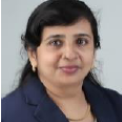
Binsu C. Kovoor
Work place: School of Engineering, CUSAT, Kerala, India
E-mail: binsu@cusat.ac.in
Website:
Research Interests: Big Data Analytics, Big Data, Machine Learning, Computer Vision
Biography
Binsu C. Kovoor is a Professor in the Department of Information Technology, Cochin University of Science and Technology since 1998. Her research interests are in pattern recognition, computer vision, machine learning, Data Security, big data and networks. She has more than 40 research publications to her credit. She has presented papers in several international conferences. She is a Life Member of Institution of Engineers, Computer Society of India, ISTE and ACM.
Author Articles
Balancing Simplification and Detail Preservation in Low Poly Image Abstraction through Edge-Preserved Seed Point Generation
By Philumon Joseph Binsu C. Kovoor Job Thomas
DOI: https://doi.org/10.5815/ijigsp.2024.02.04, Pub. Date: 8 Apr. 2024
Low poly image abstraction is an art form that has gained popularity in recent years, particularly in the digital art community. The process involves simplifying an image by reducing the number of polygons used to represent it while preserving its overall appearance and details. This paper proposes a new approach to low poly image abstraction that utilizes edge-preserved seed points to preserve important details while reducing triangle count. The proposed approach involves six steps. First, the input image is smoothed using an anisotropic diffusion filter. Second, the entropy of each pixel in the smoothed image is computed and stored in an entropy map. Third, seed points for Delaunay triangulation are selected by identifying pixels with maximum entropy values in the entropy map. Fourth, the Delaunay triangulation is generated using the seed points as input. Fifth, colors are assigned to the triangles in the Delaunay triangulation using a color selection module. Finally, the final low poly image is generated by rendering the colored Delaunay triangulation. The effectiveness of the proposed method was evaluated through qualitative and quantitative experiments, comparing its results with other comprehensive methods using a diverse range of images from a benchmark dataset. The results showed that the proposed method outperformed other methods in preserving image details while maintaining low polygon count. Additionally, the proposed method was found to be efficient and capable of producing visually appealing results.
[...] Read more.Other Articles
Subscribe to receive issue release notifications and newsletters from MECS Press journals